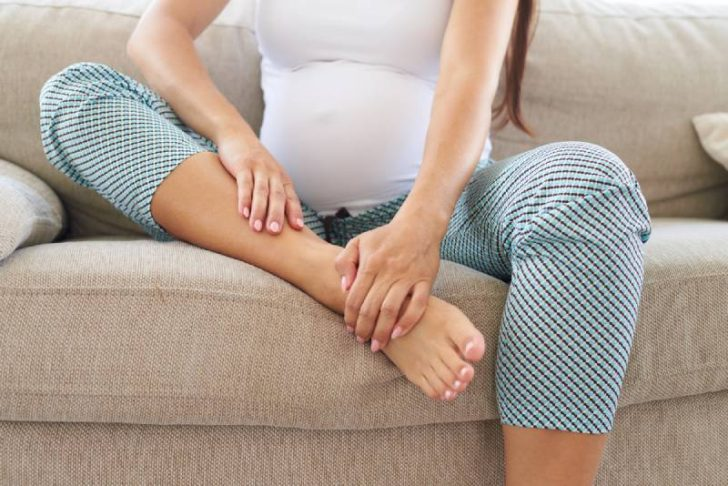
Can you wear compression stockings during pregnancy?
Share
Varicose veins and swelling are just a few of the many small surprises a woman wears during pregnancy. Your heart has to pump blood, and your leg muscles and veins have to pump blood back. However, the growing uterus, blood volume, and hormones that relax your body and prepare it for labor do not allow for good blood circulation. Your legs don't pump blood back as efficiently as they used to, they look like balloons filled with water.
To make matters worse, pregnant women prefer to be sedentary—their legs are affected by gravity rather than helping them. Their legs can become swollen, painful, tired, and even increase your risk of developing blood clots. So here is where compression can really help you.

Compression stocking basics
How Compression Stockings Can Help During Pregnancy
Compression stockings are special stockings that support the lymphatic system and veins of the legs. Pregnant women often wear stockings called graduated compression stockings. They are tighter at the ankles and looser above the knees. Pregnant women wear compression stockings on both legs, but some wear only one leg. Compression stockings come in a variety of colors, styles, compressions, and compressions. Lighter compressions can be found anywhere, and larger ones should be purchased by prescription.
Main types of compression stockings
There are different types of compression stockings to support the areas you need. Let's look at the most common options:
knee high socks
Also known as compression stockings, these provide great support and relieve swelling and pain in your calves and ankles.
stockings
If you feel pain in everything from your back to your ankles, this is your choice. They provide full coverage and really help reduce swelling. However, they are more difficult to put on. Most likely, you will need to ask someone to help you.
full length pantyhose
These compression stockings are designed for pregnant women who experience pain from their toes to their back. Now you're probably wondering, if full-length compression stockings support my body, why would I buy anything else.
Why Wear Compression Socks During Pregnancy
Generally speaking, the purpose of wearing compression stockings is to:
Stop swelling - it uses regular movement of the calf/foot to push fluid back to the heart.
Pain Relief - If fluid builds up in your leg (which may not always manifest as swelling -- called venous insufficiency) and makes it painful, socks can again help push fluid back into your heart.
Stops blood clots - In addition to fluid, blood can collect in the veins in your legs and cause blood clots.
Stops varicose veins - Although compression stockings don't fix varicose veins, they can help them not get worse (bigger) or hurt.
PRO TIP: Arteries help carry blood through veins to the body. Veins don't pump blood, they just let the work of the heart and arteries push it back to the heart - the "journey's end" of your blood.
When to Wear Compression Stockings During Pregnancy?
Usually when you want to stop any of these things.
Many women feel no need for compression stockings. If you're young and don't stand up often - a lot of people don't wear them. However, many people do (or can help by wearing them).
swelling
If you notice a lot of lower extremity swelling, compression stockings may help.
painful leg
While this is usually combined with swelling, if you find that your legs are very painful from standing for long periods of time - you may want to consider compression stockings.
If that's an option, it's also a great option to sit down while raising your fees.
blood clot
Pregnant women are at higher risk for blood clots because of how their blood functions during pregnancy (see my post on whether pregnant women are immunocompromised).
In addition to this, sometimes blood clots are more likely:
Airplane travel - because you're stuck in one place and your legs don't move that much, you're at higher risk on this type of travel (even train travel, etc.) - this is a good time to do stress stockings (even if you not worn at other times).
Hospitalization/Bed Rest - If you are in the hospital or on bed rest, you are at higher risk of developing blood clots. The only problem is that with compression stockings you may be putting too much force on them. So it will be a risk/benefit trade-off thing. Even at these times, you can still exercise your legs to prevent blood clots ("tapping the gas" with your foot and then lifting it can help prevent clots).
Sedentary work - If you sit at a desk all day, you may be more prone to blood clots. Hopefully most workplaces will let you stand up and stretch your legs every now and then (or ask for a sit/stand desk).
Many pregnant women feel the same way, opting to wear full-body clothing to ease back and leg pain. But you can probably guess the problem: these are the hardest to wear. The more your body compression stock covers, the more time you'll have to spend getting into them.
That's why many professionals recommend sticking with compression stockings or knee-length stockings that are tall enough to provide support for many pregnant women's painful areas. It will save you a lot of time every time you want to get dressed.










